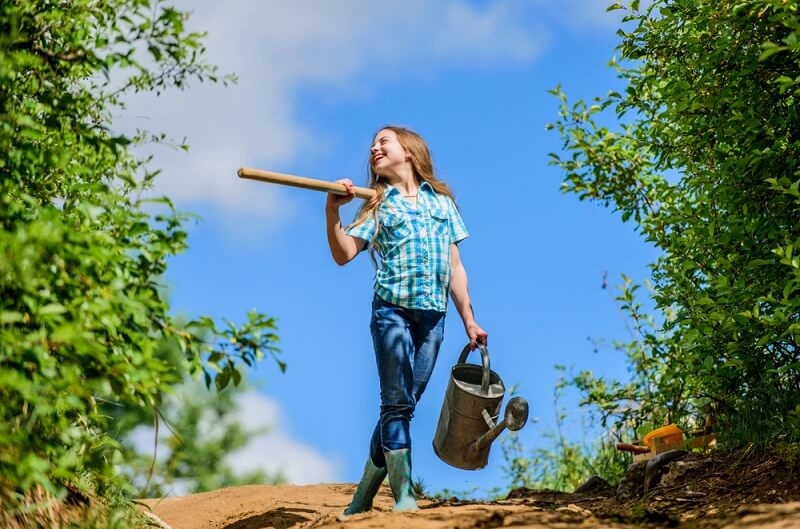
Commencing your gardening venture can be invigorating and intimidating at the same time. You don't need to worry; even if you've never gardened before, there are plenty of beginner gardening tips that will enable you to achieve some greenery. Unfortunately, many people make common mistakes that can be avoided with some planning ahead, which beginner gardeners often do. Regardless of whether you want a straightforward, step-by-step guide to gardening or some tips for easy indoor gardening, the preparation to get started can make all the difference.
In this gardening guide, you will find pragmatic tips, helpful insights, and a beginner gardening glossary to help you grow your confidence along with your gardening. You'll also find recommendations for fast-growing beginner plants that will learn quickly.
Gardening is not only good for your mental health, but it is also one of the most rewarding hobbies to get started with. There is nothing like seeing something you have planted grow into vibrant greenery or fresh herbs, which offers personal satisfaction like very few activities can.
For those new to or interested in starting new garden activities, there are additional benefits to gardening; these include:
Here are a few reasons you might consider having even a pot of herbs or a few flowers on your balcony, which can bring joy and color to your daily life.
All gardening endeavors begin with learning—and this will often involve making mistakes. Avoiding those first-time gardener mistakes will help keep your plants healthy and keep your time and energy from going to waste.
One of the most common mistakes made is not knowing how much water to give each plant being watered. Too much water will suffocate plant roots, while too little can cause wilt.
Sunlight exposure does matter. Some plants need full sun, and others thrive in shade. Ensure that, whenever possible, you place your plant in a location where it can meet its light needs.
Your soil needs to be healthy for a good gardening experience. If your soil is unhealthy, your plants will not properly absorb nutrients and will have stunted growth.
4. Forgetting about pests
Often, beginners will overlook pests until they have spread into the rest of the garden. Early prevention, with natural remedies, can keep your garden from being a total loss to these pests.
It takes time to grow—but be patient! Plant growth is slow and consistent—the best results come when you do everything consistently.
If you can learn from these five first-time gardener mistakes, you will save time, effort, and frustration during your journey and end up with a beautiful, well-established garden and a good gardening experience from the very start.

A flourishing garden begins with adequate preparation. Here is a simple step-by-step guide for preparing your garden—without the stress.
You'll need to decide on either an outdoor bed, a balcony garden, or indoor pots. Consider sunlight, shade, and wind conditions before preparing your setup.
You'll want to gather all your supplies, including gardening gloves, trowels, watering cans, bags of soil, bags of compost (if you're using compost), and your pots or containers. Once you have gathered your supplies, please keep them in a central location that allows for easy access and maintenance.
You'll want to start loosening compacted soil with trowels or, in the case of a raised bed, a shovel. Then, mix loose compost or organic fertilizer into the soil to improve soil texture and nutrient quality.
You can choose starter plants that grow slightly faster for beginners, such as lettuce or basil, or plants that grow fast (change quickly), so you'll feel good that they are growing, such as mint or marigolds.
We encourage you to set a watering schedule and regularly check the plants for changes in color or texture, so you'll know if they need more or less water.
The process of gardening can be made easier by following a step-by-step garden setup, which helps your garden plants get off to a great start, whether you garden in containers or directly in the soil.
If you live in a small apartment or don't have much outdoor space, you don't have to worry—plants can exist and thrive in the right circumstances indoors. These easy indoor gardening experiences will help you create a vibrant green oasis right inside your home.
With these easy indoor gardening experiences, you are ready to transform any corner of your home into a lush and calming oasis.
For those seeking quick gratification, beginner fast-growing plants are your best bet for motivation. Plants that grow quickly provide you with the ability to see results in a matter of weeks, offering instant rewards for your efforts.
Some great options include:
Growing fast-growing plants is a significant confidence boost for novice gardeners and a way to begin experimenting with other species.
Good habits lead to long-term gardening success, and this is how to keep your plants healthy and thriving.
If these maintenance practices are consistent, your plant will stay healthy and beautiful throughout its growth period.
Having a successful garden is as much about mindset as it is technique. Have patience, delight, and observation. You won’t succeed with every plant, and that is an acceptable outcome. Each failure teaches you more about nature's rhythm and resiliency.
When you encounter failure, do not let your heart sink; instead, make adjustments and continue exploring. Over time, your novice gardening methods will evolve into effective practices, tailored to your space, comfort level, and desired yields.
Even seasoned gardeners face issues, so it’s important to recognize problems early and act fast:
Understanding these common challenges allows you to make quick fixes and maintain your plants’ overall well-being.
With the right beginner gardening tips, you can cultivate a thriving garden that grows in tandem with your confidence. Avoid common mistakes made by first-time gardeners, follow a simple step-by-step garden setup, and select fast-growing, beginner-friendly plants to build momentum. Gardening is about patience, care, and connection with nature—one seed at a time.
This content was created by AI